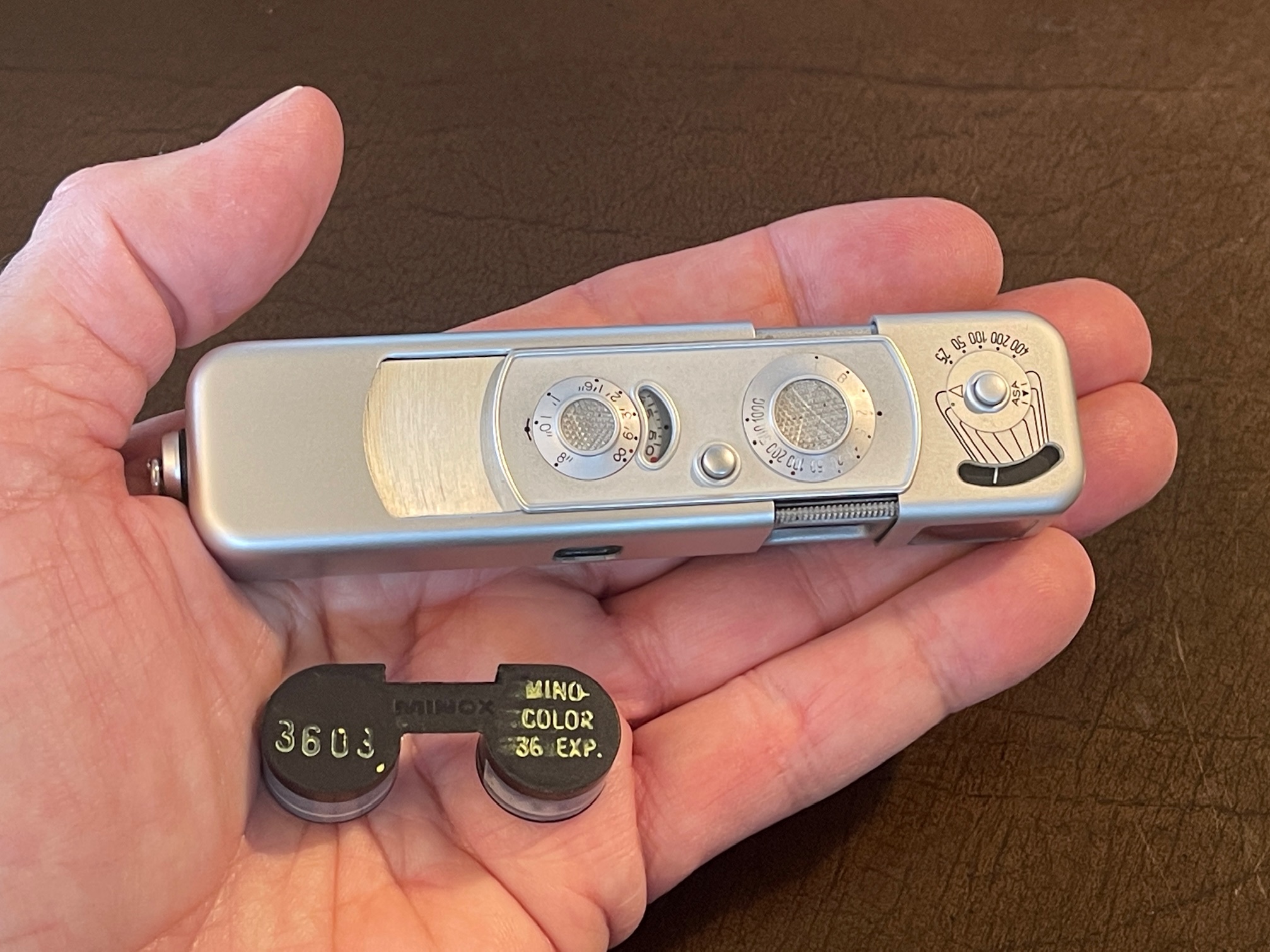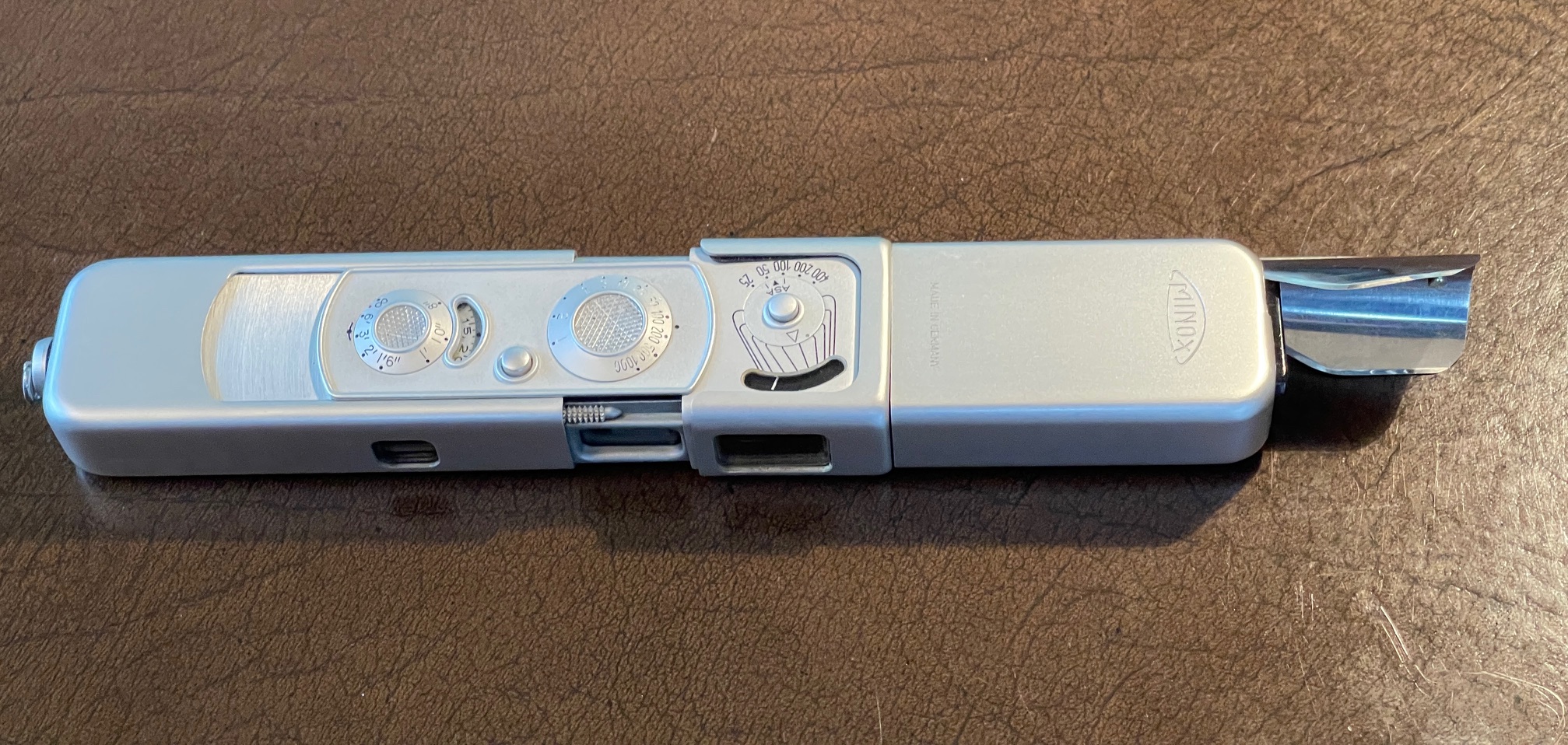For the spy in you.

Minox B and 36 exposure film cassette.
Having made 150,941 of its various predecessors, with production starting in Riga, Latvia in 1936, Minox had refined their spy camera to the extent that a dual range, coupled selenium meter was included in the ‘B’ model, first made in 1956. Production totaled a startling 384,328 through 1972, suggesting there were either more Russkie spies than even the CIA counted, or that there were some 300,000 plus twits who thought they could get decent sized prints from the 8 x 11 mm negative the camera produced. They couldn’t.
That’s not to denigrate the ingenuity of the design which includes neutral density and green filters, shutter speeds from 1/2 second to 1/1000, B and T, and focusing to a scant 8″ using the included lanyard as a distance scale. Film cassettes held up to 50 exposures and the very decent viewfinder has a suspended, illuminated frame. The lens has a fixed f/3.5 aperture and with a focal length of 15mm the depth of field is large.
The Minox was part of a complete camera system which included a binocular attachment for the super spook, a projector, an enlarger, a tripod holder and tripod, and a flash attachment for AG1 peanut flash bulbs for midnight spookery.

Minox B with flashbulb attachment. The reflector retracts.
This is the latest addition to the Home Theater photographic hardware display and dates from 1962. Believe it or not, it has a properly functioning exposure meter, activated with the button at right. By the time the B was made production had moved to Wetzlar in Germany and the camera is quite beautifully made, just like the Leica M3 next door. But now that everyone on earth has a spy camera – it’s called a cell phone – the Minox is no more than a charming period piece on display with a variety of other classics, and it is most assuredly a classic piece. However, if you need huge prints, stick with that iPhone.
Michael Caine has at it in The Ipcress File, 1965.